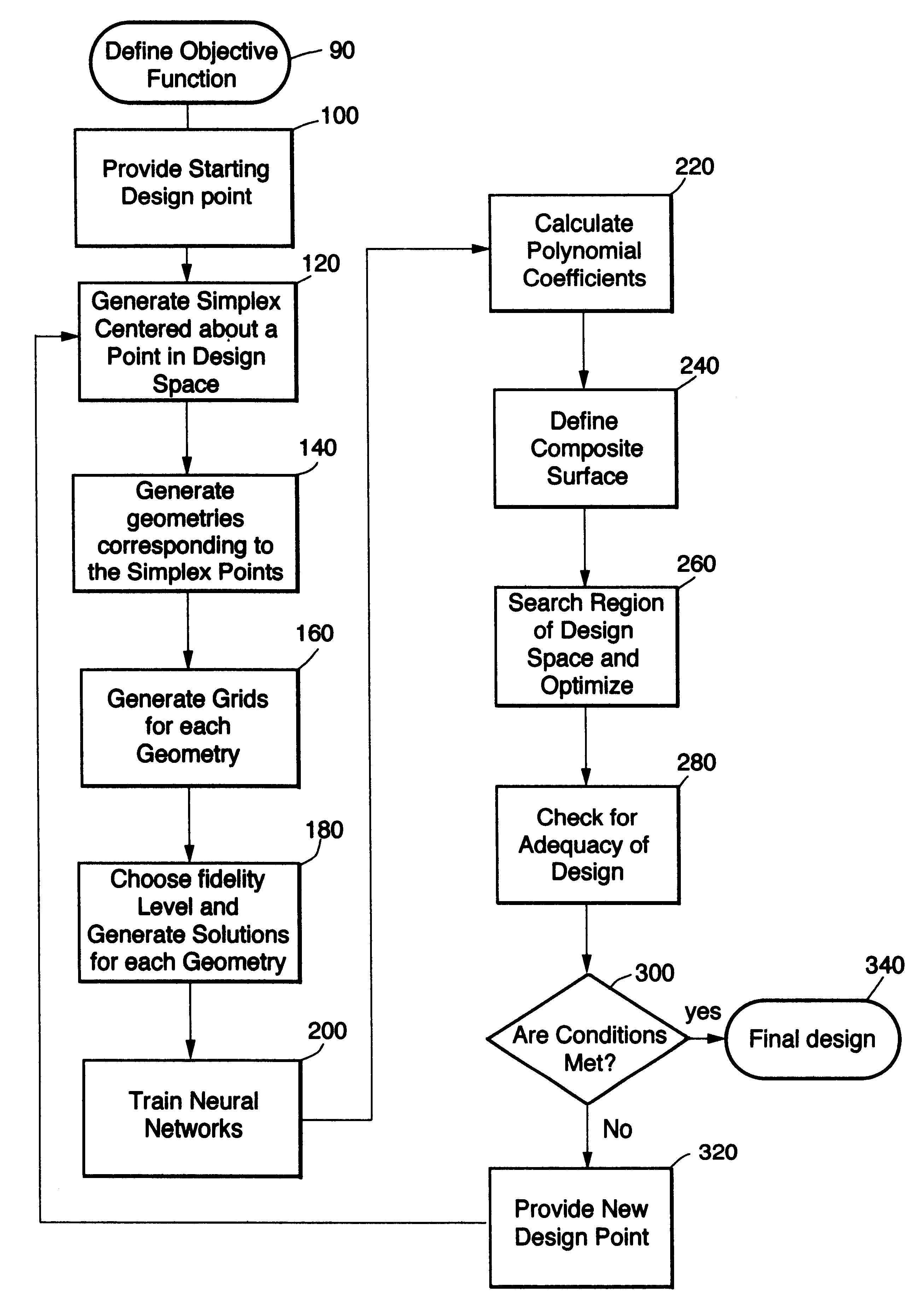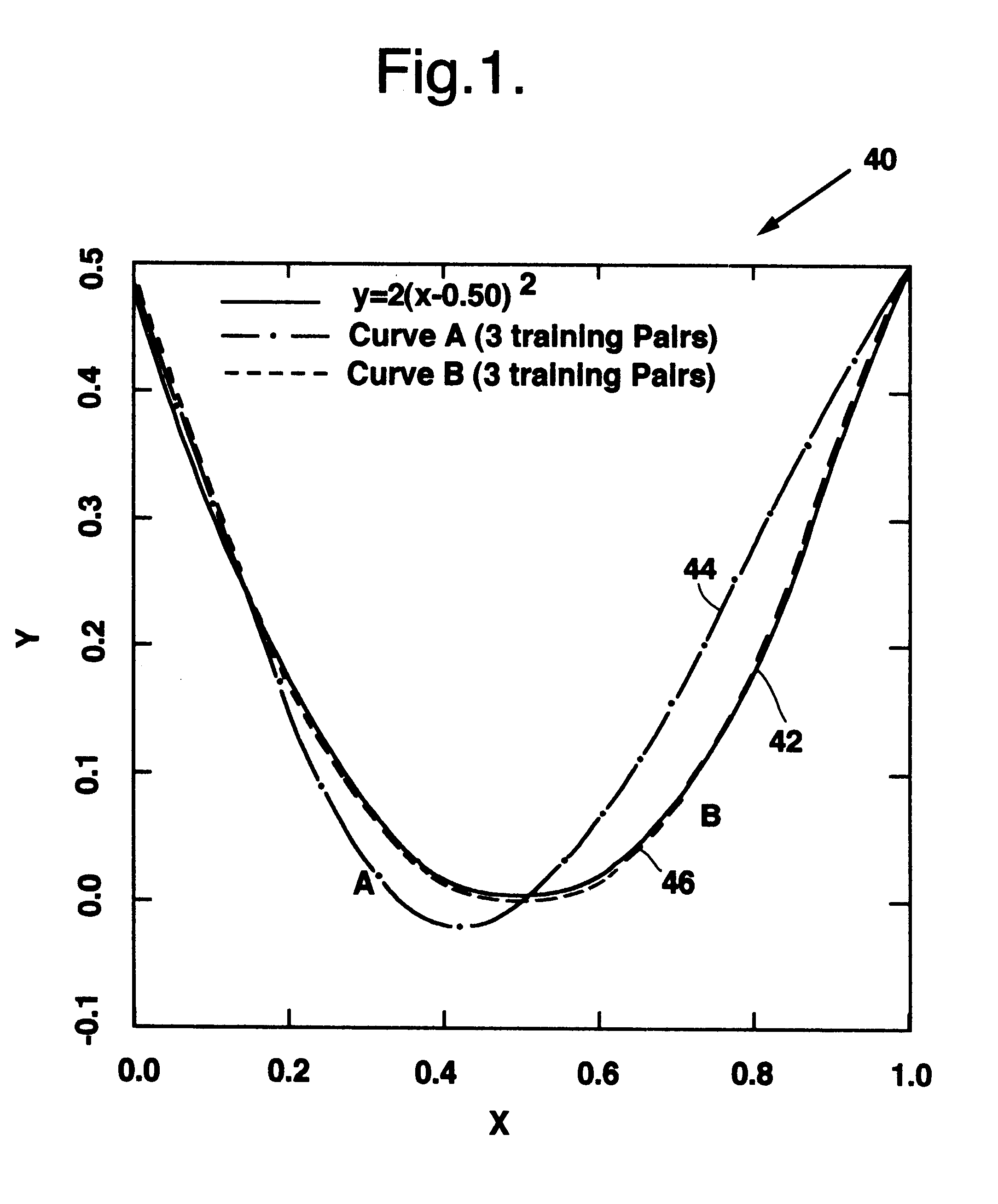Method for constructing composite response surfaces by combining neural networks with other interpolation or estimation techniques
a composite response surface and neural network technology, applied in the field of improved methods and systems for design optimization using composite response surfaces, can solve the problems that the aerodynamic design optimization procedures that make efficient use of these advanced techniques are still in their infancy, and achieve accurate representation, reduce the amount of data required, and small amount of available training data.
- Summary
- Abstract
- Description
- Claims
- Application Information
AI Technical Summary
Benefits of technology
Problems solved by technology
Method used
Image
Examples
Embodiment Construction
OF PRACTICING THE INVENTION
The following applications have been chosen to demonstrate how some of the objectives of the invention have been met.
Metamorphosis of a Generic Shape Into an Optimal Airfoil
The present invention was used to reconstruct the shape of a turbine airfoil given the desired pressure distribution and some relevant flow and geometry parameters. The shape of the airfoil was not known a priori. Instead, it was evolved from a simple curved section of nearly uniform thickness. The evolved optimal airfoil closely matched the shape of the original airfoil that was used to obtain the pressure distribution. This constitutes a "blind" test. FIG. 5 illustrates the evolution of the design. The evolution of the shape of the airfoil is shown on the left, while the corresponding pressure distributions compared to the target pressure distribution are shown on the right. Clearly, the surface pressures approach the target pressure as the design progresses. The optimal airfoil shown...
PUM
 Login to View More
Login to View More Abstract
Description
Claims
Application Information
 Login to View More
Login to View More - R&D
- Intellectual Property
- Life Sciences
- Materials
- Tech Scout
- Unparalleled Data Quality
- Higher Quality Content
- 60% Fewer Hallucinations
Browse by: Latest US Patents, China's latest patents, Technical Efficacy Thesaurus, Application Domain, Technology Topic, Popular Technical Reports.
© 2025 PatSnap. All rights reserved.Legal|Privacy policy|Modern Slavery Act Transparency Statement|Sitemap|About US| Contact US: help@patsnap.com



